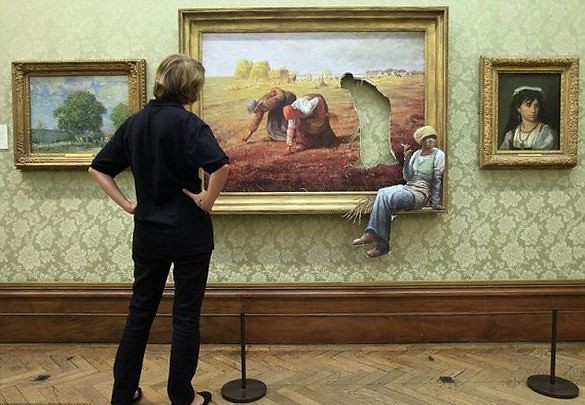The art of anonymous artwork, more or less political?
It is perhaps easy to dismiss anonymity within the arts as a tool which enhances creative expression and freedom. However, an artist hiding their name does not necessarily equate to hiding their identity, and it can be argued that it is impossible to separate an artist from their art. Indeed, how heavily the name of an artist influences the audience’s perception of their work depends on not just the artist, but also the viewer.
There are certain benefits to anonymous art; it allows artists to separate their personal and professional lives. It also prevents artists from overvaluing the credit which they receive for their work which in turn leads to suppressing self-expression and presenting opinions. This could consciously or subconsciously lead to the altering of their work in ways which they would not have done before.
Banksy does insult and ridicule the wealthy consumers of his work, as is explicitly demonstrated by his 2007 piece Morons
Banksy, who became famous through his graffiti across Britain, is often considered the most renowned anonymous artist, and his anonymity politicises his artwork more. This was emphasised when he built a shredder into his painting of what is arguably his most famous piece of artwork (Girl with Balloon) in 2018. Although the shredding stopped halfway through, Banksy claimed that his intention was to shred the whole piece, which many believe to be an act of rebellion against the art world. Although the anti-capitalist sentiment behind the destruction is only speculation, Banksy does insult and ridicule the wealthy consumers of his work, as is explicitly demonstrated by his 2007 piece Morons. However, for some, Banksy’s anonymity is part of the appeal of his work, since people associate this as a key characteristic with his artwork.
It is up to the viewer to discover how they relate to the work, and thus create their own interpretation
Additionally, anonymous art can potentially broaden interpretative horizons, since it enables the viewer to consider the art without feeling obligated to take the ideas, beliefs or intentions of the artist into account.
The above argument assumes that viewers consider this context when looking at art. Whether they consider it depends on if identity is deemed an important and intrinsic part of art, as well as whether the viewer has knowledge about the artist. The extent to which this is necessary also depends on the piece: often, relatability is something people look for within art. Looking at a piece and taking whichever of our own thoughts and emotions we can see in it (albeit a form of projection that may not reflect the intentions of the artist when creating the piece) is common practice, subconscious or not. Therefore, the artist never truly has the power to choose the meaning of the work. It is up to the viewer to discover how they relate to the work, and thus create their own interpretation.
A more political piece could benefit from the artist’s anonymity because it allows a more candid expression of opinions
If anonymous art prevents the viewer from obtaining contextual knowledge and ideas about the artist when looking at the work, this inspires questions regarding what level of context is necessary in order to look at a piece and fully understand it. The value of context is dependent on the artist and the work: a more political piece could benefit from the artist’s anonymity because it allows a more candid expression of opinions without the artist potentially having to worry about social repercussions. These could be societal judgement, or in more extreme cases, violence due to political controversy within a country.
Anonymous art allows the artist to express more controversial opinions with less restriction or even selfish intentions. However, artist anonymity still changes the context of the work and how much viewers actually know about the artist and their varying possible intentions.

Comments